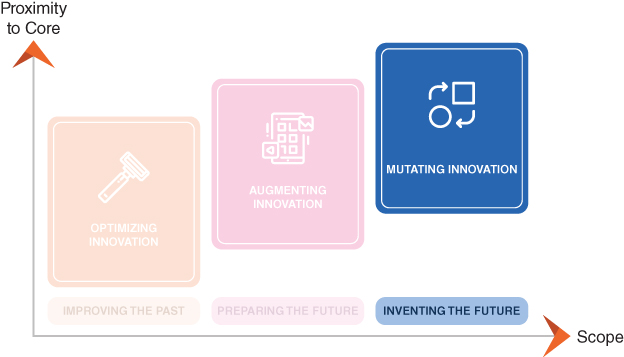CHAPTER 12CAN YOU IMAGINE A FUTURE THAT DOESN'T INVOLVE X?: MUTATING INNOVATION

Model 3 Overview of the three innovation tracks
Source: Kris Østergaard
When asked about the timeline for when the first space elevator would be built, Arthur C. Clarke, the world-famous author who wrote the science fiction book 2001: A Space Odyssey and the first person to describe how satellites could be used to create global communications networks,1 replied: ‘probably 50 years after they all stop laughing’.
The quote was, in fact, not Arthur C. Clarke's. He borrowed it from another visionary Arthur, namely the American scientist and engineer Arthur Kantrowitz, who also researched space travel and inspired Clarke's description of space elevators moving from the ground and rising 36,000 km into space2 in the novel The Fountains of Paradise. The quote holds a greater truth, with which many visionary inventors and scientists agree. Ideas and concepts that challenge existing paradigms will often be ridiculed and deemed impossible by both experts and laymen, until it is obvious that they are no longer impossible.
From Alexander Graham Bell's telephone patent, which the American communications company Western Union refused to buy for $100,000, to John Logie Baird's invention of the first television, which was rejected by radio pioneers as an insignificant invention,3 to the Wright brothers’ plane, ...
Get Transforming Legacy Organizations now with the O’Reilly learning platform.
O’Reilly members experience books, live events, courses curated by job role, and more from O’Reilly and nearly 200 top publishers.

